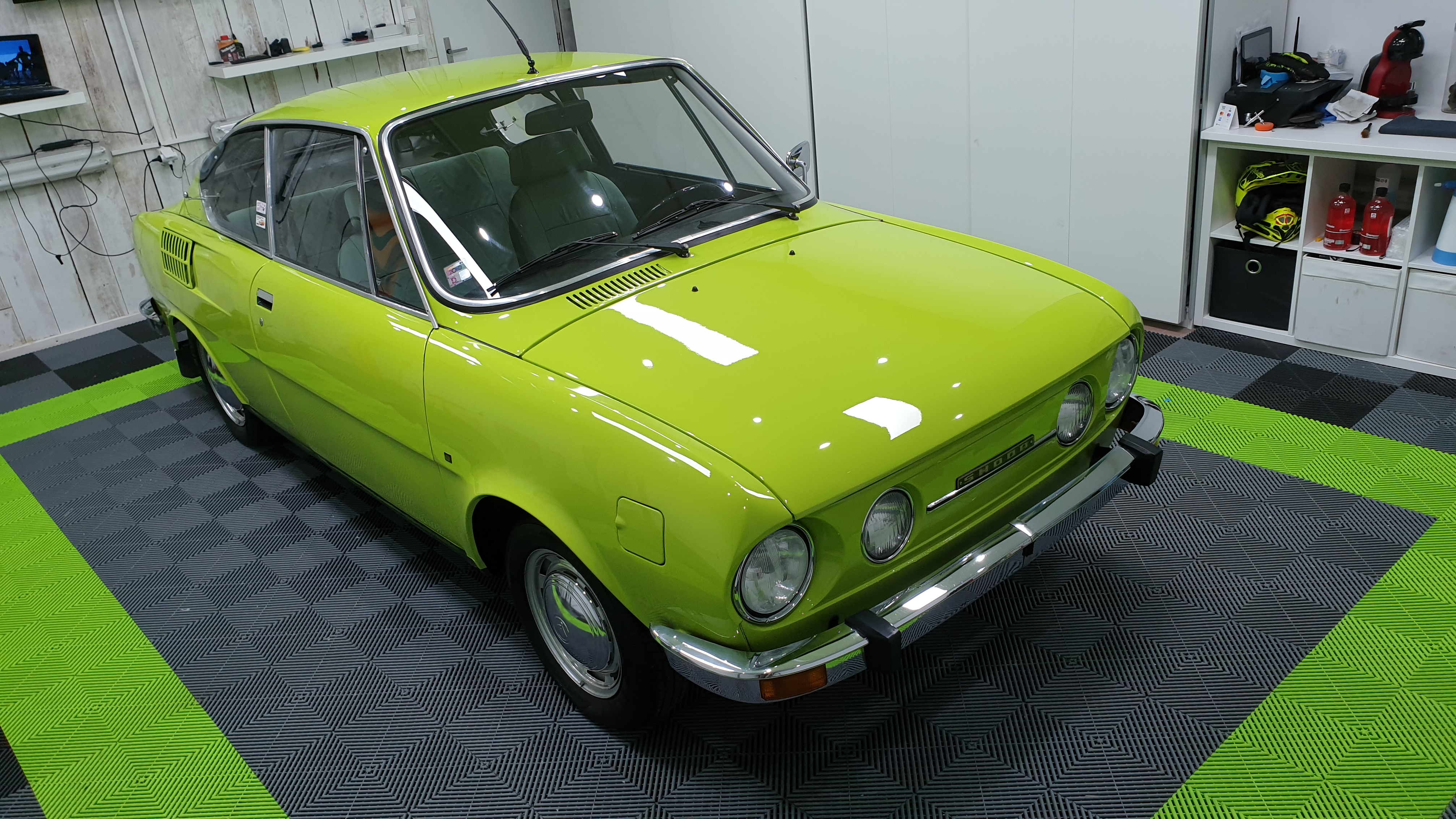Alchemy combined with painstaking manual labour
When it comes to taking care of his clients’ cars, Jaromír Drahokoupil goes beyond what most of us would regard as normal and necessary. He even polishes exhaust mufflers or the underside of the bonnet, and applies ceramic coating protection to the wheel arches, exhaust pipes and brake callipers.
And his customers appreciate it. They’re people who are passionate about cars. It doesn’t matter if it’s a supercar, an ordinary limousine or a veteran in their garage.
People have recently been discovering the advantages of protecting their car as soon as they buy it and before they take it out on the road. Roughly three-quarters of Jaromír Drahokoupil’s work involves these kinds of jobs; the rest consists of renovating the paintwork on old cars and veterans.

And how does he spend the week working on this kind of job? “I start with paint decontamination, for example, which means cleaning airborne rust off the surface. That’s followed by clay cleaning, using a special clay for mechanical cleaning. Then I tape over the plastic and rubber parts, before polishing, polishing and polishing once again. That’s necessary because even brand-new cars can have marks from transportation or from the brushes used in car showroom carwashes. After polishing, the surface is degreased several times. Then, two layers of ceramic coating are applied, using a special lamp to cure it. Meanwhile, the wheels are taken off and cleaned and degreased. The wheels are also treated with ceramic coating - and the same fate awaits the brake callipers, plastic wheel arches, other plastic parts, exhaust pipe(s), headlights and windows. One popular recent innovation is a hybrid polyurethane film, which is attached mainly to the front of the car to protect it from grit kicked up by other cars,” Drahokoupil explains.




































